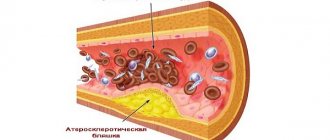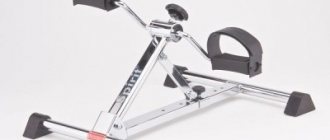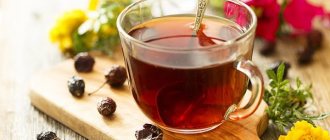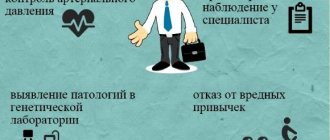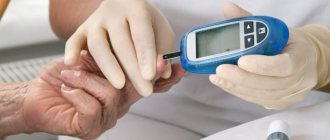Folk remedies for cardiac bradycardia
It is useful to use folk remedies for bradycardia together with medications prescribed by a doctor. If a person has an attack and requires emergency help, some unconventional methods will help normalize the condition and prevent the development of negative consequences. Based on natural ingredients, you can make effective decoctions, infusions and tinctures. The treatment regimen and prescriptions must be agreed with the doctor.
Why is it dangerous?
The heart is “our everything.” Even minor disruptions in its operation can lead to the most unpredictable consequences. Heart rhythm disturbances, in particular bradycardia, can cause a number of serious problems:
- A decrease in heart rate leads to a deterioration in the blood supply to the body. The blood does not have time to saturate the tissues with oxygen. This can impair the functioning of all internal organs.
- With bradycardia, the brain begins to receive less oxygen. This may cause memory impairment, behavioral disorders, dizziness, and headaches.
- The worst outcome of the negative impact of bradycardia on human health is a heart attack, respiratory arrest, death.
Efficiency
Sinus bradycardia is a type of arrhythmia during which there is an irregular heartbeat and a decrease in heart rate of less than 60 beats/min. The causes of this pathology are varied, the symptoms are pronounced. The disease can be cured using complex methods, therefore, in addition to traditional therapy, bradycardia is often treated at home using unconventional means. Traditional medicines are not able to influence the root causes of the disease, but with their help it will be possible to relieve associated symptoms, strengthen the heart muscle, normalize blood pressure, and increase the body's protective functions.
Folk remedies have a number of advantages, among which the most significant are:
- There are a minimum of side effects, and if used correctly and the treatment regimen is followed, they are completely absent.
- A variety of recipes and methods of use, so everyone can choose a convenient and optimal option for themselves.
- Cheapness of ingredients used as a basis for the preparation of medicines.
- Safety.
Return to contents
Surgical treatment for bradycardia
Treatment of severe bradycardia involves surgery, namely the implantation of a pacemaker, the task of which will be to control the contractions of the heart muscle. This device includes electrodes, an electrical impulse generator and a control microchip, thanks to which an individual program can be installed for each patient, allowing you to set the duration and frequency of heart contractions, the strength of the electrical impulse and other functional characteristics.
Implantation of a pacemaker for bradycardia is indicated in the following cases:
- If the patient suffers from short-term but regular fainting.
- If bradycardia alternates with tachycardia (tachy-brady effect), when you cannot use drugs indicated only for a rare pulse.
- In the presence of chronic or progressive heart failure.
- When drug treatment is ineffective.
- When bradycardia is a consequence of the use of drugs that cannot be withdrawn. This usually happens in the presence of a cardiac disease, the manifestations of which can only be stopped with these drugs. Here conservative treatment is useless.
- In the presence of thromboembolic exacerbations.
Two months after implantation of the pacemaker, the patient fully recovers.
The pacemaker needs to be replaced every five years, which is explained by the life of the batteries that power it.
Healthy recipes
Herbal infusions
A complex herbal mixture, which includes the following components, can help get rid of bradycardia:
- nettle;
- rose petals;
- black currant leaves;
- chamomile flowers;
- yarrow;
- valerian root.
The recipe is as follows:
- Mix all herbs in equal proportions.
- Separate 1 tsp. mixture and pour 250 ml of boiling water.
- Cover the container with a lid and let it brew in a warm place for half an hour.
- Strain the finished drink, drink warm 3-4 times a day after the main meal.
Return to contents
Dill seed tincture
This remedy can not only treat bradycardia. It also has a beneficial effect on blood vessels, dilating them, normalizing blood pressure, strengthening the heart and evening out the pulse. The tincture is prepared using this method:
- Grind a heaping spoonful of dill seeds in a coffee grinder.
- Place 500 ml of red wine on the fire and boil.
- Add crushed seeds, boil for 10 minutes. over low heat.
- Infuse the product for 1 day, after which, without straining, put it in the refrigerator.
- Drink the tincture within 10-15 minutes. every time before meals, 1.5 tablespoon.
Return to contents
Yarrow
If you need to speed up your pulse during bradycardia, you need to drink an infusion based on yarrow, which quickly normalizes blood pressure. You can prepare it using this method:
- Pour 20 g of dried herb into 300 ml of boiling water.
- Place the product in a steam bath and let stand for another 20 minutes.
- Strain, take 3-4 times a day, 1 tbsp. l.
You need to be treated with folk remedies carefully. If a person has arterial hypertension, it is necessary to consult a cardiologist before using this medicine.
Honey, garlic and lemon
When a patient needs emergency help for bradycardia, you can give him a honey-lemon-garlic mixture, which tones the blood vessels and stimulates the heart rate. The product is prepared in this way:
- Pour boiling water over 5 lemons, then grind them in a meat grinder.
- Peel and grind 5 goals into a paste. garlic
- Combine all ingredients, add half a liter of honey, mix well.
- The product is infused in a glass container for 2-3 days.
- Use 2 tbsp. l. once a day before meals for 1.5 months.
- Next, consume as soon as the first symptoms of bradycardia are felt.
Return to contents
Essential oils
Aromatherapy, which uses natural, aromatic oils, helps to stop an attack of bradycardia. A few drops of the product should be applied to the wrists, temples and hollow above the upper lip. To speed up your heart rate, it is recommended to use the following oils:
- orange;
- mint;
- from pine;
- rosemary;
- pink;
- eucalyptus;
- fir;
- tea tree;
- ginseng oil.
Return to contents
Tincture of pine branches
A good, proven remedy that can relieve tension and bring the pulse back to normal. The medicine is prepared using this method:
- Collect young tops of pine branches and rinse under running water.
- Separate 100 g, pour 300 ml of vodka.
- Leave to infuse in a dark and cool room for 15 days.
- Take the finished product daily, 15 drops, diluted in half a glass of water.
Return to contents
Valerian
If you need first aid for bradycardia at home, you should drink valerian tincture, which is sold in ready-made form at the pharmacy. If you want to prepare the medicine yourself, you can use the following recipe:
- Pour 2 tbsp of vodka into a glass. l. with a pile of peeled and crushed plant roots.
- Cover the container with a lid and leave to infuse for 2 weeks.
- Take the prepared medicine daily, 1 spoon in the morning and evening after meals.
Patients suffering from hypotension should use this drug with caution, as it reduces blood pressure.
Other means
To successfully combat bradycardia, it is important to strengthen the body's protective functions. A useful mixture will help you do this, which is simple to prepare:
- Pour boiling water over 4 lemons and grind them together with the peel in a blender.
- Grind 500 g of walnut kernels in a meat grinder and combine with lemons.
- Add 1 tbsp to the ingredients. sesame seeds and the same amount of honey.
- Mix everything well again and put it in the refrigerator.
- Take 1 spoon of the mixture each time before eating.
The patient can improve his condition with the help of massage.
A soothing massage, which is useful to do in the evening before bed, normalizes the heartbeat. Using circular movements, massage first the neck area, then the shoulders, both arms, palms and fingers. Afterwards, pinching and finally stroking movements are performed. If you do this massage daily, blood circulation will be normalized, the heart will become stronger, and the pulse will even out.
The importance of diet
Proper nutrition during cardiac bradycardia plays one of the most important roles, since it is thanks to the normalization of the diet that it will be possible to improve the functioning of the cardiovascular system and prevent repeated bradycardic attacks. The menu should include foods rich in healthy fats and omega-3 acids. These include:
- red fish and meat;
- seafood;
- fish fat;
- flaxseed, olive and corn oil.
Conservative treatment
Functional bradycardia does not require treatment. In this case, it is sufficient to carry out preventive measures to reduce the risk of heart complications. If the cause of this condition is found, appropriate therapy is prescribed to correct the primary pathology.
Neurogenic
The development of neurogenic bradycardia of the heart is associated with a disorder in the regulation of the ANS (autonomic nervous system) caused by spinal cord injury. The level of rhythm slowdown depends on the degree of damage to the structures. It is important to provide first aid as soon as possible after injury, otherwise the risk of complete cardiac arrest increases.
Other reasons for the development of neurogenic pathology include infectious lesions of the organ and vagoinsular crisis. General recommendations for the treatment of bradycardia of this form are:
- wearing clothes with a loose collar that does not compress the carotid sinuses;
- full treatment of diseases that slow down the rhythm;
- eliminating pressure on the eyeball, which enhances the functioning of the vagus nerve and increases the risk of developing pathology;
- timely implementation of replacement therapy for hypothyroidism;
- maintaining proper nutrition;
- maintaining a healthy lifestyle;
- weight control, blood pressure;
- daily walks in the fresh air.
Drug treatment is prescribed for neurogenic shock or other severe disruption of the ANS:
- Atropine sulfate – for severe neurogenic bradycardia;
- Methylprednisolone or another glucocorticoid – as hormonal decongestant therapy;
- crystalloid solutions - to maintain blood pressure.
Important! After a spinal column injury, if there is no breathing, artificial ventilation is performed. Using external immobilizing agents, the position of the vertebrae is corrected.
Physiotherapy is effective for neurogenic bradycardia. Courses of ultrasound therapy, sinusoidal modulated currents, inductothermy, electrosleep, and electrophoresis are prescribed. You can apply paraffin and ozokerite applications.
Ischemic
The pathology occurs against the background of coronary heart disease, in the period after a heart attack. First of all, it is recommended to monitor your blood pressure level, monitor your pulse (its frequency per minute), and pay attention to any fluctuations.
Follow proper nutrition, which involves excluding from the diet foods that place a high load on the heart and blood vessels. It is important to normalize weight, as extra pounds negatively affect the condition of the organ, increasing the risk of developing heart failure.
We recommend reading:
How to treat cardiac tachycardia
Etiotropic treatment consists of eliminating the primary pathological condition: organ ischemia, myocardial infarction, angina pectoris, etc. In case of severe rhythm disturbance and general malaise, drug therapy is prescribed:
- adrenomimetics (Alupent, etc.) are prescribed if 1st degree atrioventricular block is diagnosed;
- anticholinergic cholinergic blockers (Atropine sulfate, etc.) increase heart rate and block the effect of acetylcholine on cholinergic receptors;
- Adrenaline derivatives (Isoprenaline, etc.) stimulate the functioning of the heart;
- phosphatase inhibitors (Eufillin, etc.) - a bronchodilator drug that is prescribed when other medications are ineffective.
If the pulse is reduced to 40 beats per minute, the medications do not have the desired effect, emergency surgery is performed.
In severe cases, surgery is performed to correct the underlying pathology.
At home, the pathology of the ischemic form is corrected with folk remedies. You can drink a cup of strong coffee or tea, which are considered drinks that stimulate the functioning of the organ. Slow heartbeat can be treated with radish and honey, an infusion of pine branches, which is taken orally 15 drops twice a day.
Against the background of hyperkalemia
Bradycardia and hyperkalemia are often combined and develop as a complex. This is possible when treating cardiac pathology with a potassium-containing drug. Undoubtedly, potassium has a positive effect on the functioning of the organ, but its insufficient or excessive content in the body causes pathological conditions.
First of all, the underlying disease – hyperkalemia – is corrected. When determining the treatment method, the level of microelement in the blood and the severity of symptoms are taken into account. Among the medications used in the treatment of hyperkalemia:
- a calcium gluconate solution injected into a vein helps reduce myocardial excitability and has a preventive effect on ventricular fibrillation;
- short-acting insulin is involved in stimulating the transition of potassium from intercellular exudate into cells;
- sodium bicarbonate is prescribed for severe hyperkalemia and metabolic acidosis.
Diuretics – diuretics – will help reduce the concentration of microelements in the body.
On a note! In severe cases, hemodialysis is performed (especially if acute or chronic renal failure is present).
Ciliated
Cardiac atrial fibrillation develops in combination with tachycardia. In this case, a decrease in the rhythm of the organ alternates with an increase in contractions. A drug such as atropine sulfate is often used, which helps improve the general condition. In case of intolerance, Ephedrine or Eufillin is prescribed.
Considering the source that contributes to the development of atrial fibrillation, the following treatment methods are used:
- if the cause is an endocrine disease, replacement therapy is carried out using hormonal agents;
- in case of improper use of medications or severe poisoning, sorbents are prescribed;
- with frequent loss of consciousness and low blood pressure, Ephedrine and Caffeine are administered;
- Autonomic disorders are corrected with medications that increase the tone of the vascular walls.
It is important to follow a healthy diet, adjust your lifestyle and exercise.
Sinus
The pathology occurs against the background of a cardiac disease (infarction, myocarditis, organ ischemia, heart failure, etc.), extracardiac pathology (hypothyroidism, ANS disorder, diabetes mellitus, etc.). Treatment of sinus bradycardia primarily involves excluding the primary disease.
Drug therapy is carried out using the following means:
- anticholinergics, which increase heart rate;
- sympathomimetics that affect the sympathetic nervous system;
- detoxification drugs are used if the cause of sinus bradycardia is an infectious disease or poisoning with a toxic substance.
Medication
Potassium-containing drugs, muscle relaxants, anti-heartburn drugs and some others can reduce the heart rate, and if used uncontrolled, even cause cardiac arrest.
Competent first aid provides a favorable prognosis.
Treatment is determined taking into account the severity of clinical manifestations. In case of mild disturbance of the general condition, detoxification therapy is carried out at home. In severe cases, the patient must be admitted to a hospital.
First aid is as follows:
- put the person horizontally on his back, remove tight clothing;
- if possible, induce vomiting to empty the stomach of the drug that contributes to intoxication;
- give any sorbent to drink, for example, activated carbon.
Medical care involves the introduction of Askofen, Caffeine, and Isadrina into the patient’s body.
Nutritional Features
If bradycardia develops, a specific diet is not required. However, you should follow some recommendations. First of all, this is fractional nutrition: it is better to eat more often, but in small portions. The diet includes food that has been steamed (this does not burden the activity of internal organs, in particular the heart).
Useful for bradycardia will be:
- fruits and vegetables (especially carrots, onions, cabbage, oranges, apples, bananas);
- lean meat;
- fermented milk products (sour cream, kefir, cottage cheese);
- seafood containing phosphorus - a useful microelement for the activity of the heart and blood vessels;
- porridge (buckwheat, rice, oatmeal).
It is important to regulate your drinking regime. The daily volume of liquid you drink should be at least one and a half liters.
Interesting! If bradycardia develops in any form, foods such as fried, fatty, canned, pickles, alcohol, and flour will be harmful.
Physical activity
Walking in the fresh air is useful for bradycardia and is indicated for patients of any age. 40-45 minutes a day are enough to strengthen the immune system. In addition, the muscular system is strengthened, circulatory function and lung activity are improved.
You can visit the swimming pool. Swimming has a positive effect on the functioning of the cardiovascular system and helps reduce stress on the joint system. The duration of one session is about 30 minutes.
Cycling is another technique that ensures heart health. You can visit the gym, where there are exercise bikes. This is convenient in the winter when it is not possible to ride a bike.
It has been scientifically proven that athletes who run have a heart that works “like a clock” without interruption. Even bradycardia in such people is considered normal and does not require specific treatment. In addition, running helps to activate blood circulation, the functioning of the central nervous system, and the immune system.
Exercise should be moderate. It is important to maintain this activity throughout your life.
Other methods of conservative therapy
Psychotherapeutic sessions are necessary if bradycardia is caused by an incorrect attitude towards everyday things. In this case, therapy is aimed at rethinking behavior and everyday reactions. The effectiveness of psychotherapy is enhanced by proper nutrition and lifestyle correction.
In addition to the swimming pool, a sauna and a circulation shower have a positive effect on the activity of the cardiovascular system. Balneotherapy, rubbing the skin with cold water, dousing, and taking radon and pine baths are prescribed.
Psychogenic illness is corrected with psychotherapy.
In some cases, physical therapy is used. This can be electrophoresis on the collar section, which is carried out with Caffeine or Mezaton (solution), calcium chloride (solution). Acupuncture and galvanization sessions are useful.
If bradycardia is combined with low blood pressure, massage of the calf muscles, hands of the upper extremities, and cervical-collar region will be useful.
Causes of low heart rate
- Hypothermia
- Thyroid disease
- An increase in the tone of the nervous system also affects the decrease in heart rate.
- Increased intracranial pressure
- The cause of low heart rate is heart disease (myocarditis, coronary disease)
- Low blood pressure, fatigue.
- With oxygen starvation, symptoms of bradycardia are also present
If your heart rate drops slightly, there is no need to worry. For example, in athletes, as a result of frequent training, the heart muscle is well developed, so at rest the heart rate is slightly lower in such people. But if the decrease in heart rate is significant, you should pay attention and think about treatment. Such symptoms indicate pathological processes in other organ systems (thyroid gland, heart, dysfunction of the pacemaker).
First aid for bradycardia at home
Bradycardia is not a separate disease that has arisen, but a sign of an external problem, mainly the heart, a mental problem or injury. The danger lies in the minimal supply of necessary oxygen and entails heart failure and heart attack.
Relevant symptoms.
- A common symptom is ringing in the ears.
- Enlarged veins, especially in the neck area.
- Real dizziness.
- If you look at the eyes, dilated pupils will be noticeable.
- The face takes on a red tint.
- The skin on the arms or legs noticeably loses sensitivity.
- Blue lips.
- Annoying restlessness, often without any reason.
- Disorders of consciousness of various types.
- Breathing at a slow pace.
- Jerking of some muscles, mainly the face or limbs.
- Uncontrolled going to the toilet.
How to quickly and effectively treat bradycardia
- If your heart rate is low, you need to drink hawthorn tincture . For 100 ml of alcohol you need to take 15 grams of dry, crushed hawthorn. Seal tightly and let steep for 10 days. The finished tincture should be taken three times a day, 10 drops diluted with cold water.
- Motherwort juice also helps with heart bradycardia . The fresh plant should be washed and the juice thoroughly squeezed out. Take 30 drops per tablespoon of water. This method will relieve you of the symptoms of bradycardia forever.
- If you have bradycardia, you should make an infusion of yarrow . Pour 15 grams of yarrow into a glass of water, boil for 15-20 minutes, then let it steep for an hour. Strain and take until recovery three times a day.
- For heart bradycardia, you need to make medicine from wine . Boil half a liter of Cahors (any other wine) over low heat for 10 minutes, then add 50 grams of dry dill seeds (crush in advance) and boil for another 10 minutes over low heat. Drink the product three times a day, make sure it is at room temperature, but store it in the refrigerator.
- Walnuts help in treating low heart rate . You need to mix half a kilogram of ground walnuts with 50 ml of sesame oil and 200 grams of sugar. Lemons need to be cut and poured with boiling water, let it brew, the result will be a thick mixture. Then mix the lemons and nuts together and take three times a day before meals.
- Low heart rate can also be treated with honey . Mix equal proportions of honey and chopped walnuts and dried apricots in a blender. This vitamin collection perfectly nourishes the body as a whole, supports the heart and relieves symptoms of bradycardia.
- When the pulse is low, make an alcohol tincture of nettle . Pour 20 grams of finely chopped nettle into 300 ml of alcohol and leave for 10 days in a dark place. Take 30 drops orally.
- A panacea for all diseases is garlic and lemons . To help the heart, you need to make an infusion with lemon and garlic. You will need 10 lemons and 10 heads of garlic. Mix freshly squeezed lemon juice with garlic passed through a garlic press and pour honey over everything. Let the product steep for 10 days and take a tablespoon before meals.
- Also, at home, bradycardia can be treated by collecting the following herbs : 30 grams of calamus, rowan and 50 grams of currants, hawthorn and dandelion roots. Pour boiling water over the herbs, let steep for an hour, strain. Drink this remedy throughout the day.
- When your pulse is low, you can make an infusion from the motherwort collection . Pour a tablespoon of dry collection into a glass of boiling water. Let it brew for 2 hours, filter and drink throughout the day. This remedy improves heart function, relieves low heart rate and shortness of breath.
- Another recipe, this tincture of pine branches is famous for the rapid treatment of bradycardia. To make the medicine you need 70-100 grams of pine tops and 200 grams of alcohol. Let it sit in the sun for 10 days. Then take 15 drops three times half an hour before meals.
Prevention of low heart rate does not include anything special. It is necessary to avoid stress, increase the amount of vitamins in the diet, and say no to bad habits. Monitor your body weight and cholesterol levels, which have a bad effect on your heart function. Adhere to a healthy, proper lifestyle. Nowadays there are many medicines. But traditional medicine methods are no less effective, since they have a beneficial effect on the entire body as a whole and are natural. Thus, the treatment of low heart rate (bradycardia) is quite successful. You just need to know if you are allergic to certain components.
Treatment of bradycardia using traditional medicine
If bradycardia is not complicated, it can be treated at home.
Various herbal infusions are often used for treatment. Here are some effective herbal teas. Take 1 tbsp. l. Aralia rhizomes, 2 tbsp. l. roots of Rhodiola rosea, Leuzea, angelica, mistletoe herb, 3 tbsp. l. St. John's wort herb, valerian rhizomes, 4 tbsp. l. licorice root, 5 tbsp. l. dry rose hips. The mixture is crushed. Take 2 tbsp. l. collection, place in a saucepan, pour in 1 liter of warm water, cover with a lid, bring to a boil and boil for a quarter of an hour. After this, the prepared decoction is placed in a thermos along with the herbs for 8 hours. Take 0.5 cups with honey 20 minutes before meals for 3 months. A decoction of dill seeds with wine has worked well in the treatment of bradycardia. Boil 0.5 liters of dry red wine for 10 minutes over low heat, then add 2 tbsp. l. dill seeds, which need to be pre-chopped. The mixture is boiled for a quarter of an hour, cooled, poured into another convenient container, and stored in the refrigerator. Take 1 tbsp warm. l. 20-30 minutes before meals 3 times a day for 14 days. You can take a break for 7 days and repeat the course.
Contraindications to the use of medicinal herbs for bradycardia
Before we begin discussing the issue: “symptoms and treatment of bradycardia,” let us consider in more detail contraindications to the use of medicinal plants. It should be noted that tinctures of medicinal herbs cannot be taken if you are individually sensitive to their components.
Many decoctions used in the treatment of bradycardia and other cardiovascular pathologies include digitalis.
The herb has many beneficial properties, but caution must be exercised when using it. Foxglove is a poisonous plant, so it should be taken under the supervision of a doctor. It is not recommended to drink decoctions based on this medicinal drug for people with chronic diseases of the digestive tract.
Belladonna is also actively used in the treatment of bradycardia. The medicinal herb increases the heart rate. But belladonna is also a poisonous plant. It should not be taken in case of atherosclerosis, prostate adenoma, serious lung diseases, or exacerbation of ulcerative colitis.
The importance of diet when your heart rate is low
Despite the fact that at first glance, the heart and stomach are not connected, this is not at all the case. An interesting fact is that a person’s diet affects the functioning of all his internal organs, and very often the real cause of irregular rhythm and bradycardia is poor nutrition. The rules of the diet for bradycardia are extremely simple:
- It is necessary to normalize the consumption of kitchen salt - no more than 5 grams and no less than 2 grams.
- You should eat enough easily digestible fats. To do this, the diet must contain fish, fish oil, olive, corn or flaxseed oil.
- In order for the body to receive enough potassium, bananas, nuts, vegetables and dried fruits should be added to the menu. Potassium is also found in milk, cottage cheese and liver.
- The diet requires wheat porridge, durum wheat pasta, beans and other legumes, as these products are rich in magnesium, which is also necessary for the heart.
- You need to remove flour products, sweets and other dishes rich in easily digestible carbohydrates from your diet.
- It is necessary to reduce the amount of sugar consumed.
- You should eat as little animal fat as possible.
- It is advisable to limit the consumption of pepper and other spices. You should not get carried away with fried, baked and canned foods, sausages and mushrooms.
Advice! Such nutrition will not only increase heart rate, but also improve the general condition of the body, reduce the risk of developing atherosclerosis, diabetes and coronary heart disease, so this diet is also indicated for people with other diseases of the cardiovascular system.
Are traditional methods of treatment effective for severe forms of bradycardia?
We should not forget that in severe cases of bradycardia, the patient experiences such unfavorable symptoms as decreased blood pressure and dizziness. In this case, the person may suddenly lose consciousness. Some people experience chills: they resemble a decorative flower, bent by a light breeze. This category of patients should take medications regularly. In severe cases of pathology, decoctions and tinctures of medicinal herbs should be taken in combination with stronger drugs prescribed by a doctor.
Treatment of neurogenic bradycardia
The severity of the clinical picture of the disease underlies the choice of treatment tactics. If it is possible to relieve an attack with medications, then isadrin, alupent, and atropine are used. Some patients have intolerance to these drugs, then ephedrine is used. In extreme cases, when drug treatment is impossible, or its implementation has proven ineffective, surgical intervention is used. A pacemaker is often implanted and appropriate medications are prescribed if necessary.
Zelenin drops for bradycardia
Patients suffering from bradycardia can be treated with Zelenin drops. This herbal preparation is endowed with antispasmodic and sedative properties. The drops contain the following ingredients:
- Belladonna leaf, popularly called mad berry.
- Menthol.
- Valerian root.
- Tincture made from lily of the valley.
The patient is recommended to take 20 drops three times a day. If your heart rate is below 45 beats per minute, you should not use this medicine.
How does severe bradycardia manifest?
In severe cases of pathology, a person experiences a decrease in blood pressure and becomes dizzy. As a result, he may lose consciousness and suddenly fall down.
In some patients, the pulse rate does not exceed 40 beats per minute. In this situation, there is no need to look for an answer to the question: how can bradycardia be treated at home? After all, such patients require strict medical supervision and treatment in a hospital setting. A patient suffering from severe bradycardia is often fitted with a special pacemaker.
An infusion based on yarrow will help cope with bradycardia!
Yarrow increases appetite and normalizes the functioning of the cardiovascular system. To prepare the infusion you need to take 10 grams of plant material. The dried herb is poured with 0.2 liters of boiling water. The mixture must be put on fire, it is boiled for 15 minutes. After this, the product must be infused for at least an hour. Then the infusion is filtered, it should be taken 10 ml before meals. As soon as the pulse returns to normal, it is recommended to stop taking the infusion. If the patient’s well-being worsens (decreased pulse rate), treatment is resumed.
Application of dill
Few people know, but this substance has a pronounced effect on the cardiovascular system, which is why it is often used to treat bradycardia. Dill helps raise blood pressure, normalize vascular tone and dilate blood vessels in the heart.
It is worth noting that the latter is extremely important for older people, since many of them suffer from atherosclerosis of the coronary vessels and coronary heart disease.
For the best effect, 50 grams of finely chopped dill seeds should be mixed with 500 milliliters of sweet red wine, such as Cahors. In this case, you should first boil the wine for ten minutes so that the alcohol evaporates from it. After the dill is added to the wine, boil the mixture for another ten minutes. After this, it is infused and filtered. Should be stored in the refrigerator.
This remedy is taken according to a special regimen. For two weeks, the patient drinks one tablespoon of the drug three times a day, after which a two-week break is taken.
Important! At this time, under no circumstances should you drink other alcoholic beverages.
Sometimes you can find advice to drink cognac for bradycardia. It should be noted that this may have an effect, however, in no case should you get carried away with it. You should drink no more than 20 ml of this drink. If persistent bradycardia persists against this background, then it is better to give up alcohol.
A storehouse of useful substances!
What to do if a person was diagnosed with bradycardia, and treatment with well-known folk remedies did not give the desired result? The patient should try a mixture of walnuts and sesame oil. This drug helps strengthen the heart muscle and improves immunity. This product has a tonic effect on the body. It is prepared this way:
- 4 small lemons are cut into five equal parts and filled with 1000 ml of boiling water.
- After 25 minutes, the fruit is passed through a meat grinder; the juice formed when chopping the lemons does not need to be drained.
- Then add 0.5 kg of finely chopped nuts, 0.2 kg of sugar and 0.2 liters of sesame oil to the lemons.
- The mixture is transferred to a clean jar and should be stored in a cool place.
It is necessary to take 10 ml of the medicinal mixture 30 minutes before meals. The duration of the treatment course is one month. This mixture contains quite a lot of fat, so it should not be taken by people with chronic liver diseases. If pain occurs in the area of the right hypochondrium, you should stop taking the drug.
Combination of garlic and lemon to speed up your rhythm
To prepare the product, you need to pour boiling water over ten whole lemons. After they sit for a couple of minutes, squeeze them to obtain juice. Separately, nine heads of garlic must be peeled and chopped as finely as possible, and, if necessary, mashed. After this, chopped garlic is mixed with lemon juice and one liter of good honey, the resulting mixture is poured into a large jar.
Now you need to let the product brew for ten days in a cool, but not cold place without access to light. In this case, you should check the condition every day and gently shake the jar. The regimen of use is simple - every day you need to dissolve four teaspoons of this product in the morning. It is advisable to take it in the morning, on an empty stomach. This must be done within three months, even if the frequency normalizes earlier. After a year, it is advisable to repeat the treatment.
This combination of substances allows you to increase vascular tone throughout the body, normalize blood pressure and improve nutrition of the heart muscle. In addition, garlic helps strengthen the immune system, thereby helping to protect the body from the negative effects of microbes.
However, since the product contains lemons, it may not be suitable for people suffering from heartburn or high stomach acidity.
Note! It is not advisable for people with ulcers or gastritis to take it. Thus, treatment with folk remedies must be carried out responsibly and with caution.
Medicinal mixture of lemon, honey and garlic
This mixture strengthens the walls of the heart and eliminates nervousness. The product is prepared according to the following scheme:
- You need to take five medium-sized lemons, five heads of garlic, 0.5 liters of honey.
- Lemons are scalded with boiling water and cooled. After this, the juice is squeezed out of them, finely chopped garlic and honey are added to the resulting mass.
- The mixture is transferred to a glass container and infused in a place protected from direct sunlight. The product must be shaken periodically.
The drug is drunk 40 ml once a day half an hour before meals. The duration of the course of treatment is 45 days. This mixture should not be taken by people who have increased acidity of gastric juice. It should not be drunk if you have inflammatory diseases of the digestive system or if you have individual sensitivity to the ingredients of the product.
Using nuts to raise your heart rate
The familiar walnut has good efficiency. To prepare the medicine, you should take two hundred and fifty grams of sesame oil, approximately an equal amount of sugar and 500 grams. nut kernels. After crushing, the kernels are mixed with the remaining ingredients. At the same time, you need to take 3 - 4 lemons, cut them into large pieces and pour boiling water over them. The resulting liquid must be mixed with the previously prepared nut-butter mixture.
You need to drink the resulting product one tablespoon shortly before meals three to four times a day. The duration of the course varies, it all depends on the characteristics of the body. After normalization of the rhythm, the course can be interrupted. This remedy improves the overall tone of the immune system, increases appetite, normalizes metabolic processes in the body, thereby helping to improve the nutrition of the heart muscle.
Attention! It must be remembered that it can slightly increase blood pressure, which is also beneficial for heart rate.
Simple recipes for the treatment of heart bradycardia with folk remedies
Cardiac bradycardia is one of the heart rhythm disorders characterized by a reduced number of heart beats. The disease, like other types of arrhythmia, can be corrected with folk remedies. At the same time, herbal treatment perfectly complements recommended medical therapy.
But when practicing treatment with folk remedies, you must remember that:
- If bradycardia is accompanied by a heart rate below 45 beats/min, then strict adherence to all prescribed recommendations will be required;
- with a heart rate of 45-55 beats/min, cardiac bradycardia can be treated with folk remedies (but you must first consult a doctor).
Treatment
Self-medication and self-diagnosis for bradycardia are unacceptable. This is fraught with serious complications. Only a qualified specialist should diagnose and prescribe a course of treatment.
After a comprehensive examination, the doctor will determine a treatment regimen. The main method of influencing a disease is to eliminate the cause that caused it.
If there are no such reasons, then symptomatic treatment is prescribed. This is the use of medications containing atropine or adrenaline.
In the absence of a positive effect from the measures taken and a progressive deterioration in the quality of life, a surgical operation is prescribed, the purpose of which is to implant a pacemaker.
A description of the causes of bradycardia in newborns and their consequences can be found in another article.
Whether bradycardia is dangerous during pregnancy and how it can be treated, experts will tell you here.
serdce.hvatit-bolet.ru
Bradycardia - main symptoms
In addition to a reduced heart rate, symptoms of the pathology may be as follows:
- dizziness accompanied by severe weakness;
- flashing of midges before the eyes;
- fainting conditions;
- fatigue;
- a state of chills accompanied by cold sweat.
But sometimes any symptoms are completely absent and cardiac bradycardia goes completely unnoticed.
Advice! The symptoms of the pathology are quite typical and if at least one of them appears, you should seek medical advice.
Symptoms
Undoubtedly, the main symptom of bradycardia is the actual decrease in heart rate. If the heart rate monitor shows that your heart is beating less than 55 times per minute, then you are dealing with bradycardia.
You can measure heart rate without the use of auxiliary technical means. To measure the pulse, it is enough to take a segment of one minute and, by placing your fingers on the carotid artery (located under the jaw to the left/right of the Adam's apple), count the number of heart contractions. The same can be done by placing your fingers on your wrist, but this will be more difficult, especially for overweight people.
In addition, during an attack of bradycardia, the following may be observed: weakness, “brokenness” and constant fatigue, dizziness, cold sweat, fainting (a serious symptom indicating oxygen starvation of the brain - hypoxia).
Bradycardia attack at night
It should be borne in mind that during sleep the body relaxes and slows down its activity. Therefore, bradycardia is more likely to occur at night when you are sleeping. In general, this is nothing to worry about, except for a sudden drop in heart rate coupled with dizziness and difficulty breathing. In this case, you need to call an ambulance .
If bradycardia is a constant phenomenon in your life, then a slight decrease in heart rate at night during sleep is an absolutely natural process that does not require separate intervention.
zdse.ru
